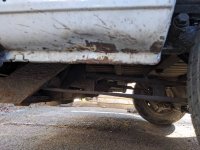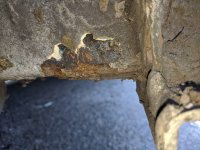The best way to get rid of rust, is cut it out and replace with new metal, 100% no arguments. However, if it is surface rust, or has not holed the metal, and the metal below can stand up to an agressive prodding from a screwdriver etc., the next best thing is to sand or grit blast it off, to sound bare metal, then use good quality primers, paint, and rustproofer/wax etc. Failing that, sound metal with surface rust can be cleared of any loose rust, be brutally honest to yourself that it is gone, any remaining surface rust may then be treated with a rust converter- I have had surprisingly good results with Fertan- and then when properly cured and treated, quaulity pprimer, undercoat, top coat, stonechip if underneath, then wax spray like Waxoil, Dynax, Dinitrol or similar; no such thing as too much!
And before I forget- loose or cracked/flaking underseal is worse than anything imaginable for making water traps that will, for sure, allow rust to get hold and and out of hand very quickly indeed. Take no prisoners getting it off, even if you have to go back to a bare panel, to avoid doubt at all costs. You will sleep easier in your bed knowing 100% that it is properly done. #
((That way you won't be woken by strange noises in the night that take weeks to pin down- the sound of your van rusting!! LoL)




